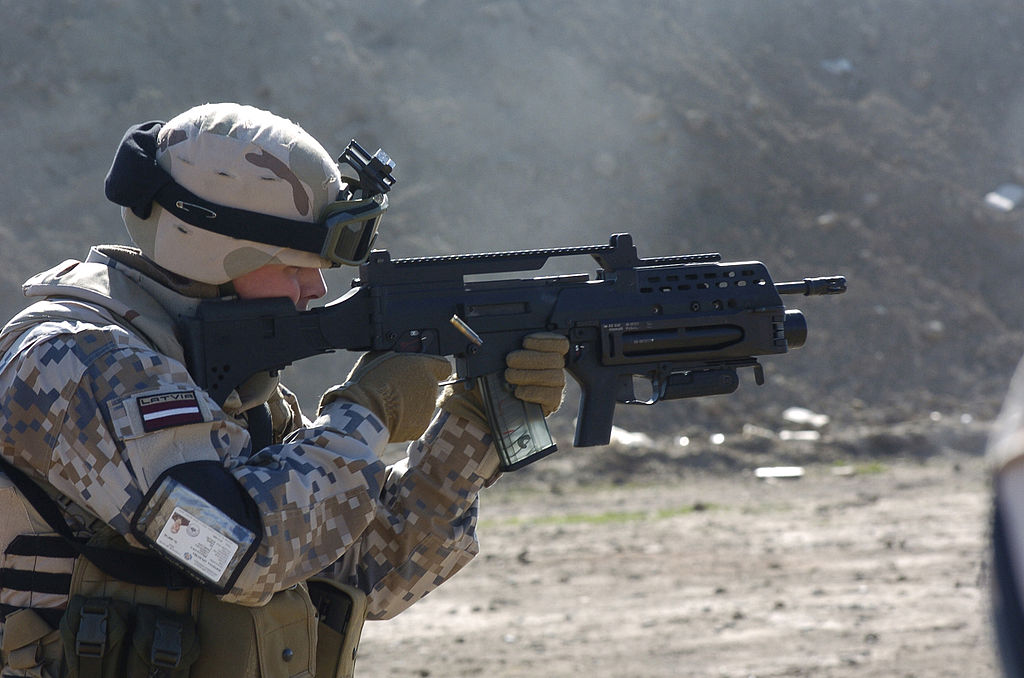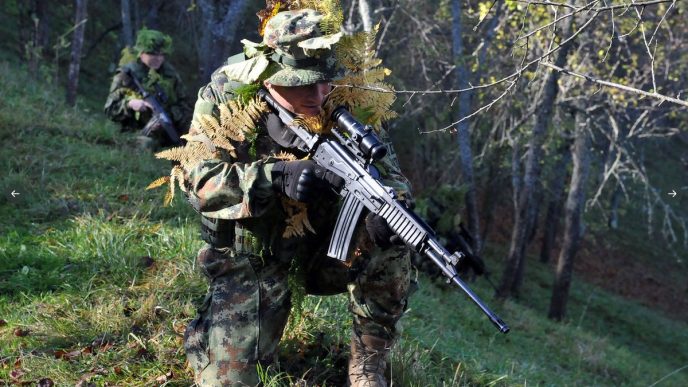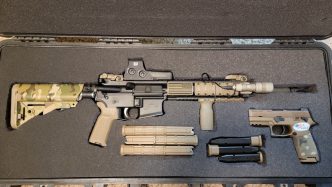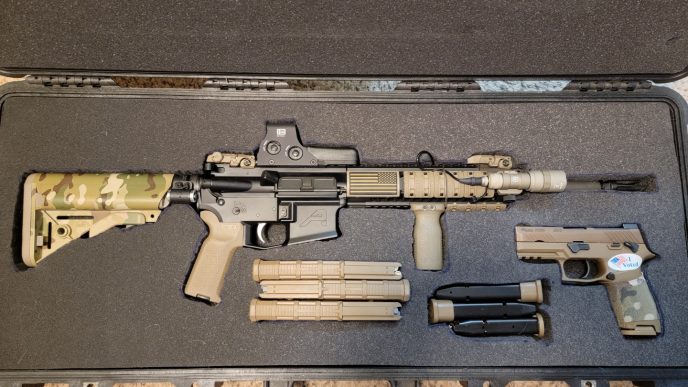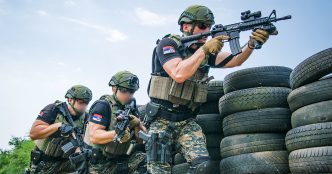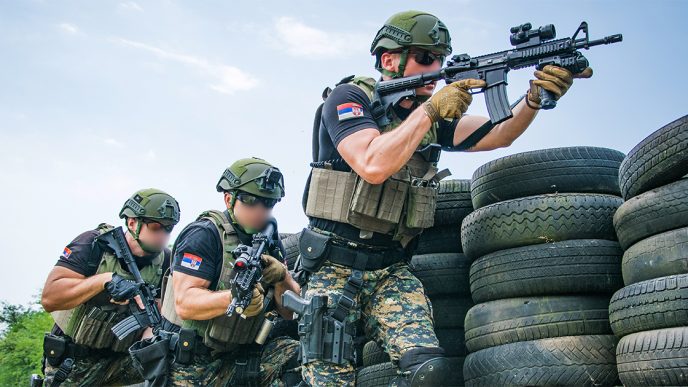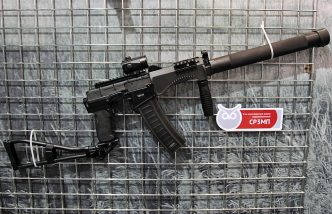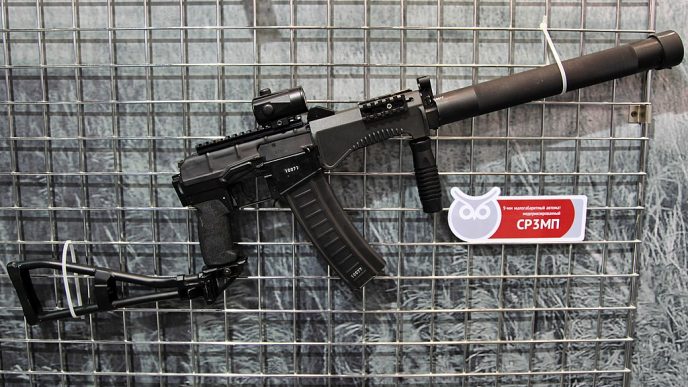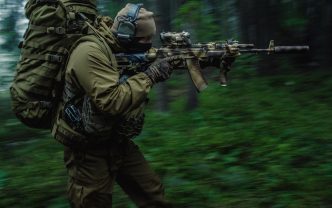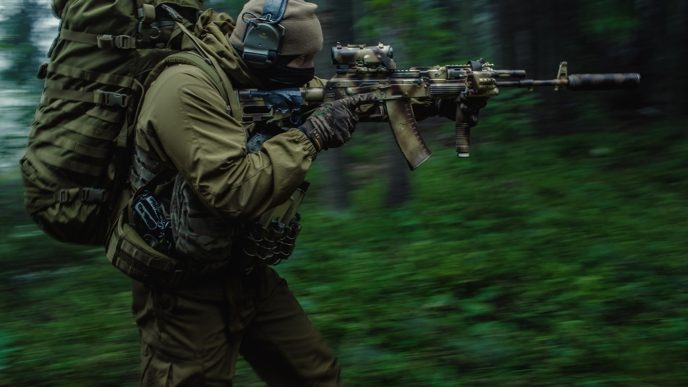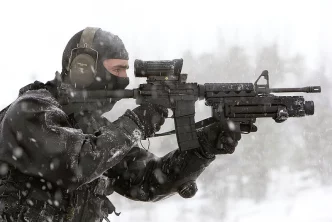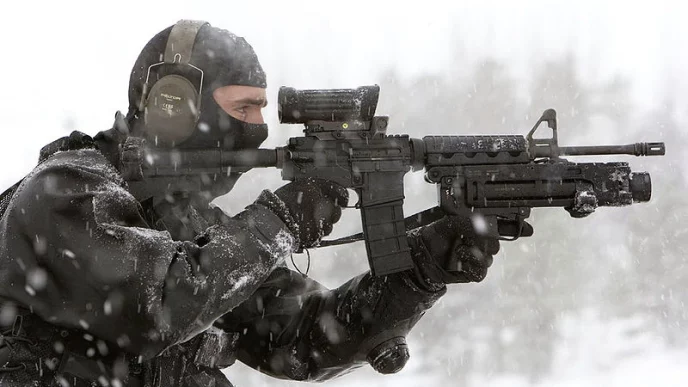The G36 rifle series was designed to meet the needs of the German armed forces and was introduced in the 1990s. As armed conflicts evolved, the German military and state leadership saw the need to modernize the infantry weapons of the national armed forces. As a result, designers at the well-known manufacturer Heckler & Koch were tasked with creating a new automatic rifle system that met NATO standards, was reliable in all terrain and climatic conditions, had a modern design, and was suitable for left-handed shooters.
Development
Efforts to design a successor for the iconic G3 rifle had been underway in Germany since the 1970s. These efforts led to developing of the innovative 4.73mm G11 assault rifle, a joint project by a group of companies led by Heckler & Koch (H&K) and featuring caseless ammunition designed by Dynamit Nobel. It was anticipated that this weapon would eventually replace the G3, so further development of H&K’s series of firearms chambered for 5.56×45mm NATO cartridges was halted.

However, H&K, with no incentive to pursue a new 5.56 mm weapon system, H&K was satisfied with the export-oriented HK33 and G41 rifles. Tragically, the G11 program ended suddenly when the Bundeswehr (German Armed Forces) canceled its procurement due to budget cuts following the unification of East and West Germany. In 1991, H&K was acquired by British Aerospace’s Royal Ordnance division, now known as BAE Systems.
The growing interest in Germany for a modern service rifle chambered for the NATO-standard 5.56 mm cartridge prompted H&K to offer the German armed forces the G41 rifle, which was also rejected. As a result, H&K began design work on a new 5.56 mm assault rifle from scratch, designated “Project 50” or HK50. The prototype was trialed, receiving a higher rating than the Austrian Steyr AUG system. The final version of the G36 was completed in 1995, and production began the following year.
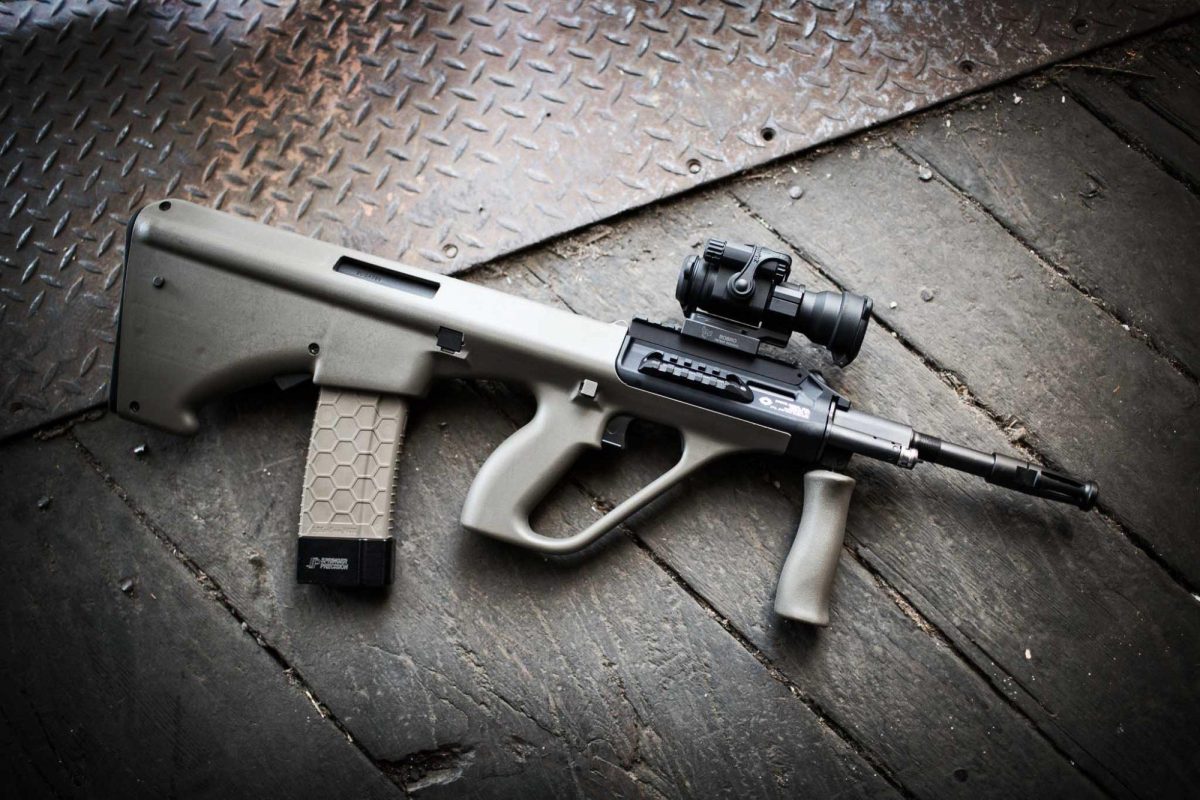
Production
The HK50 rifle was chosen for service, and the Bundeswehr (German Armed Forces) placed an initial order for 33,000 rifles designated the Gewehr G36. An option for an additional 17,000 rifles was also included in the order. The first deliveries of the G36 were made to the Bundeswehr’s NATO Quick Reaction Force during the fourth quarter of 1997. The G36’s production line was established in early 1996.
In July 1998, it was announced that the G36 had been selected as the standard rifle for the Spanish Armed Forces, replacing the 5.56 mm CETME Model L and LC rifles. Deliveries to Spain began at the end of 1999. From 1999 to 2005, 75,219 of these rifles were produced in Spain under license by General Dynamics Santa Bárbara Sistemas at the FACOR (Fábrica de Armas de la Coruña) facility in Coruña, Galicia.

The rifle has also been licensed for local production in Saudi Arabia, with the Military Industries Corporation serving as the manufacturer. Germany granted technology transfer to Saudi Arabia on 30 June 2008, and the first Saudi-made G36 was produced at MIC’s factory on 30 June 2009. However, some components for their G36s are supplied by Heckler & Koch.
Design
During the prototype development period, German designers offered modernized systems, the G11, and G41, which did not meet the standards of the German Bundeswehr. Success was ultimately achieved with a project that featured unconventional solutions, marked G36. The HK G36 operates on the principle of using powder gases with a rotating shutter as a locking system. The gas piston has a short stroke, which means that powder gases do not act on the face of the bolt, which has a positive impact on the reliability of the weapon, particularly in conditions of heavy contamination, that is, on the weapon’s working life.
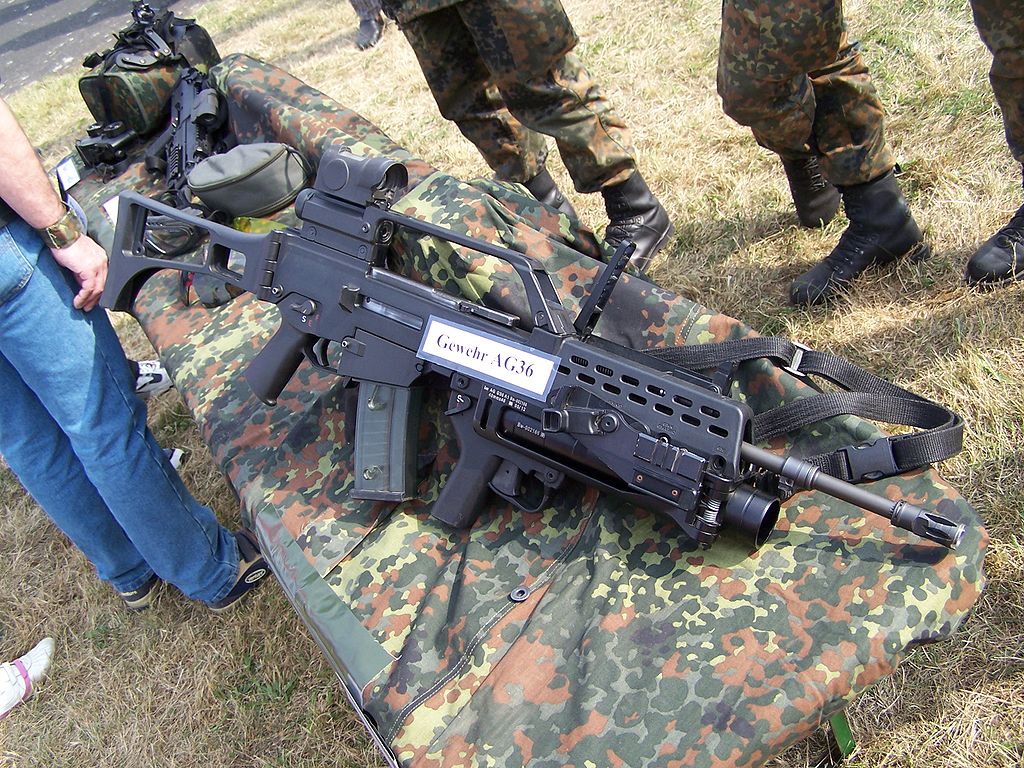
The steel barrel is cold-forged and has a chrome-plated interior with six right-hand curved grooves, with a twist pitch that allows for a full grain rotation every 178mm. The barrel has a flame breaker at the mouth, where you can see the clear finish of the slot. To optimize the weapon’s operation, especially at extreme temperatures, there are regular openings on the barrel lining on both sides of the firearm. The rifle’s casing is made of high-quality polymer plastic infused with glass and carbon fibers and has steel reinforcements. Along the upper side is a raised platform with standard Picatinny rails, on which operators can mount various tactical equipment. Folding mechanical sights are also placed on the same platform.
The shutter lock lever is solved unusually; it is located on the upper side of the casing, and at its end is a mobile handle that can be turned both to the left and to the right, which facilitates tactical and combat use even for left-handed shooters. After repeating the weapon, the system automatically switches the fire regulator to the locked position.
The shell ejection opening is placed on the right side of the weapon and does not have a cover, but it is closed by the construction of the shutter itself when it is in the front position. A deflector is placed on the rear side of the opening to protect the shooter’s face from being hit by a hot shell during firing. The magazine insert is compatible with transparent curved magazines with a capacity of 30 rounds of caliber 5.56mm, which the manufacturer “Heckler & Koch” makes from composite materials.
The magazines are equipped with locks, which can easily connect/detach the magazines without additional tools. It’s worth noting that these magazines are not aligned with NATO STANAG. The lever for releasing the magazine is placed immediately behind the planter and in front of the trigger guard. The shooter can access it with the trigger finger without removing their hand from the weapon grip.
A German manufacturer makes the ergonomic handle. The working regulator is placed immediately above and on both sides of the weapon, which further adapts the weapon for left-handed shooters. The regulator lever is profiled, easily accessible, and allows three modes: fixed, single or semi-automatic fire, and automatic. Operating modes are represented by letters or pictograms in white (fixed mode) and red.
The weapon’s stock is entirely made of composite materials and is also signed by the manufacturer “Heckler & Koch.” Customers are offered telescopic and folding stocks with or without ergonomic cheeks that are adjustable in height.
The HK G36 system adopted by the German Army is equipped with a dual optical sight ZF 3×4°, which combines an optical sight with magnification up to 3 times and a reflex non-magnifying red dot sight. The red dot is projected using daylight or a battery in low visibility.
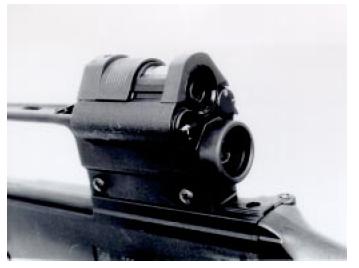
Variants
MG36
The MG36 light machine gun (MG – Maschinengewehr) is a weapon that differs from the G36 in that it has a reinforced barrel to enhance its durability and resistance to overheating.
G36K (K – kurz) carbine
It has a shorter barrel (with an open-type flash hider) and a shorter handguard. The handguard also includes a rail for mounting tactical accessories such as the UTL (Universal Tactical Light) halogen lamp from the UPS pistol. While the carbine barrel cannot fire a trombone mine or have a point placed on it, it is possible to mount and use the AG36 grenade launcher. German special forces using the G36K are equipped with C-MAG magazines that have a capacity of 100 rounds.
G26C (C – compact)
It is a further development of the G36K. It has an even shorter barrel and flame hider than the G36K. The shortened barrel length (288mm) required the designers to move the gas chamber closer to the mouth of the barrel and shorten the gas piston. The handguard and stock have also been shortened, and the carry handle (with integrated sights) has been replaced with an integrated MIL-STD-1913 (NATO STANAG 2324) Picatinny rail.
Instead of the dual optical viewfinder on the G36 and G36K, the G36C has a mechanical viewfinder. The shortened handrail has six connection points, one of which can be connected to the front vertical handrail.
G36A2
It is a modernized version of the G36 rifle used by the German Army. The G36A2 is equipped with a Zeiss RSA reflective red dot sight that is mounted on a Picatinny rail and can be easily detached. This replaced the original integrated dual-sight system reflex sight. The G36A2 also features a new front fairing with three Picatinny rails and a grip with an integrated switch to control the Oerlikon Contraves LLM01 light-laser module.
Based on the G36, Heckler & Koch produced the SL8 semi-automatic rifle and the R8 non-automatic (“repeater”) rifle, which is intended for the civilian sporting market.
Users
HK G36 systems are highly valued by users worldwide and are used by special purpose units of the French police and army and Polish special forces. In the region, they are used by the elite units of the Montenegrin police, the Anti-terrorist unit of Lucko in Croatia, and others.
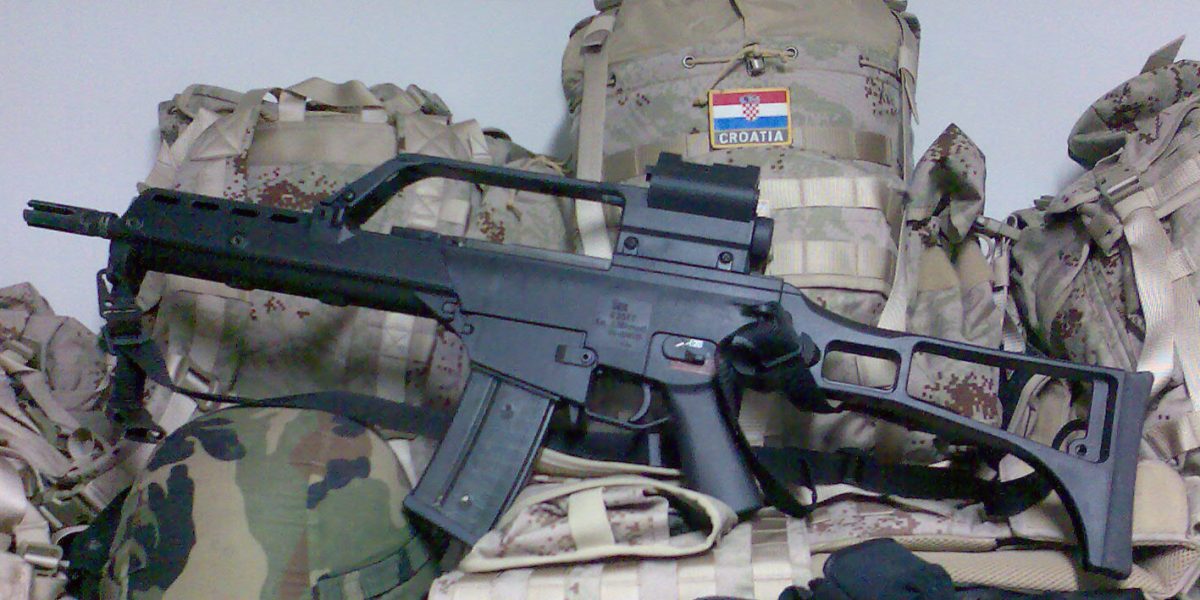
Technical specifications
| Place of origin: | Germany |
| Manufacturer: | Heckler & Koch GmbH |
| Designed: | 1990–1995 |
| Service: | 1997-present |
| Type: | Short-stroke piston closed rotating bolt |
| Caliber: | 5.56×45mm NATO |
| Barrel: | G36, G36V, MG36, MG36E: 480 mm (18.9 in) G36K, G36KV: 318 mm (12.5 in) G36C: 228 mm (9.0 in) |
| Weight (empty): | G36: 3.63 kg (8.00 lb) G36V: 3.33 kg (7.3 lb) G36K: 3.30 kg (7.3 lb) G36KV: 3.0 kg (6.6 lb) G36C: 2.82 kg (6.2 lb) MG36: 3.83 kg (8.4 lb) MG36E: 3.50 kg (7.7 lb) |
| Effective firing range: | G36, G36V, MG36, MG36E: 800 metres (870 yd) G36K, G36KV: 500 meters (550 yd) G36C, G36CV: 200 meters (220 yd) |
| Rate of fire: | 750 rounds per minute |
| Magazine capacity: | 30-round detachable box magazine or 100-round C-Mag drum magazine |
